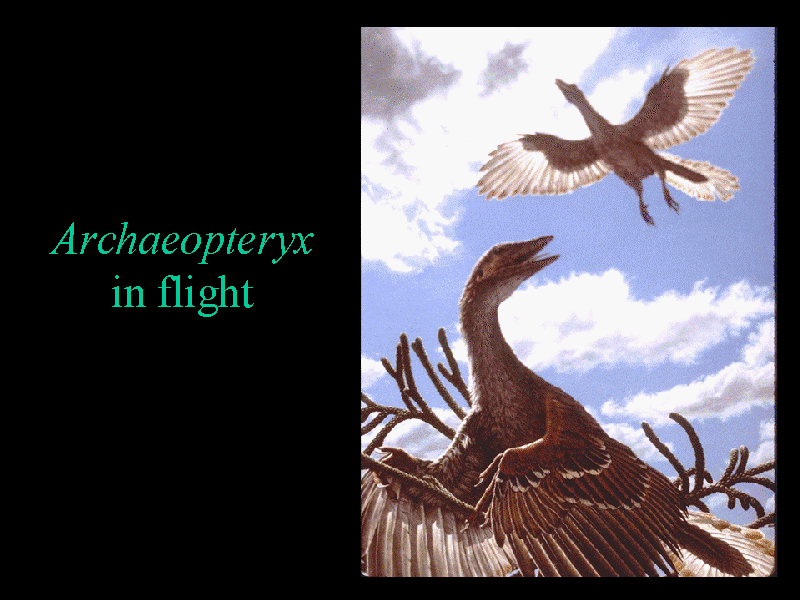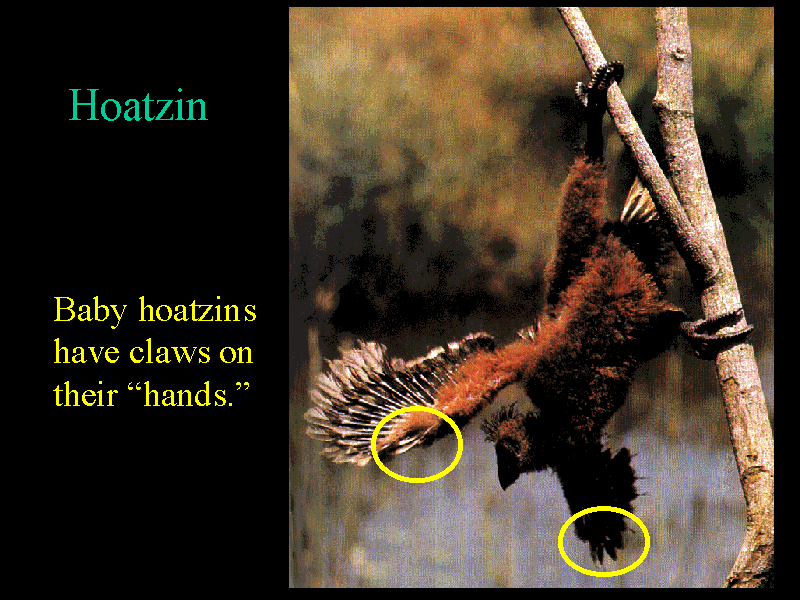Dinosaurs: Their Lives, Their Deaths and Their Evolution!
by Dr. Bob Gardner
Department of Mathematics
Department of Physics and Astronomy
Institute of Mathematical and Physical Sciences
East Tennessee State University
The Dinosaur/Bird Relationship
In 1861, just a few years before the publication of Darwin's Origin of
Species, specimens of a feathered creature were discovered in limestone
quarries in southern Germany.
 The animal was named Archaeopteryx, which means "ancient wing."
Today, there are fewer than 20 Archaepteryx fossil specimens,
but they are some of the most famous fossils ever discovered.
Archaeopteryx is the example of a transition species
(or more informally, a "missing link") between dinosaurs and birds.
The animal was named Archaeopteryx, which means "ancient wing."
Today, there are fewer than 20 Archaepteryx fossil specimens,
but they are some of the most famous fossils ever discovered.
Archaeopteryx is the example of a transition species
(or more informally, a "missing link") between dinosaurs and birds.
 The arms and legs of Archaeopteryx are remarkably similar to those
of theropod dinosaurs. Theropods also have a small collar bone which is
analogous to the wishbone (or furcula) in modern birds. These
similarities have lead the majority of paleontologists to accept the idea
that birds evolved from theropod dinosaurs sometime in the Cretaceous or
late Jurassic. Similarities between theropods
and Archaeopteryx also include jaws lined with small,
sharp teeth like those of a reptile, and the presence of sharp clawed fingers
on the hands.
The arms and legs of Archaeopteryx are remarkably similar to those
of theropod dinosaurs. Theropods also have a small collar bone which is
analogous to the wishbone (or furcula) in modern birds. These
similarities have lead the majority of paleontologists to accept the idea
that birds evolved from theropod dinosaurs sometime in the Cretaceous or
late Jurassic. Similarities between theropods
and Archaeopteryx also include jaws lined with small,
sharp teeth like those of a reptile, and the presence of sharp clawed fingers
on the hands.
 In fact, the young of today's hoatzins also have clawed hands
- evidence of their evolutionary heretige.
Similarities between modern birds and theropods include the presence
of feathers. The presence of a wishbone, and the structure of the feet.
The evidence of a bird-dinosaur evolutionary connection is very strong.
In fact, the young of today's hoatzins also have clawed hands
- evidence of their evolutionary heretige.
Similarities between modern birds and theropods include the presence
of feathers. The presence of a wishbone, and the structure of the feet.
The evidence of a bird-dinosaur evolutionary connection is very strong.
There is one big difference between dinosaurs and birds. Today, birds are
one of the most successful classes of animals inhabiting almost every
terrestrial ecosystem. Dinosaurs were equally successful during the Mesozoic
but are now extinct. What happened to the dinosaurs?
Go to the next section.



